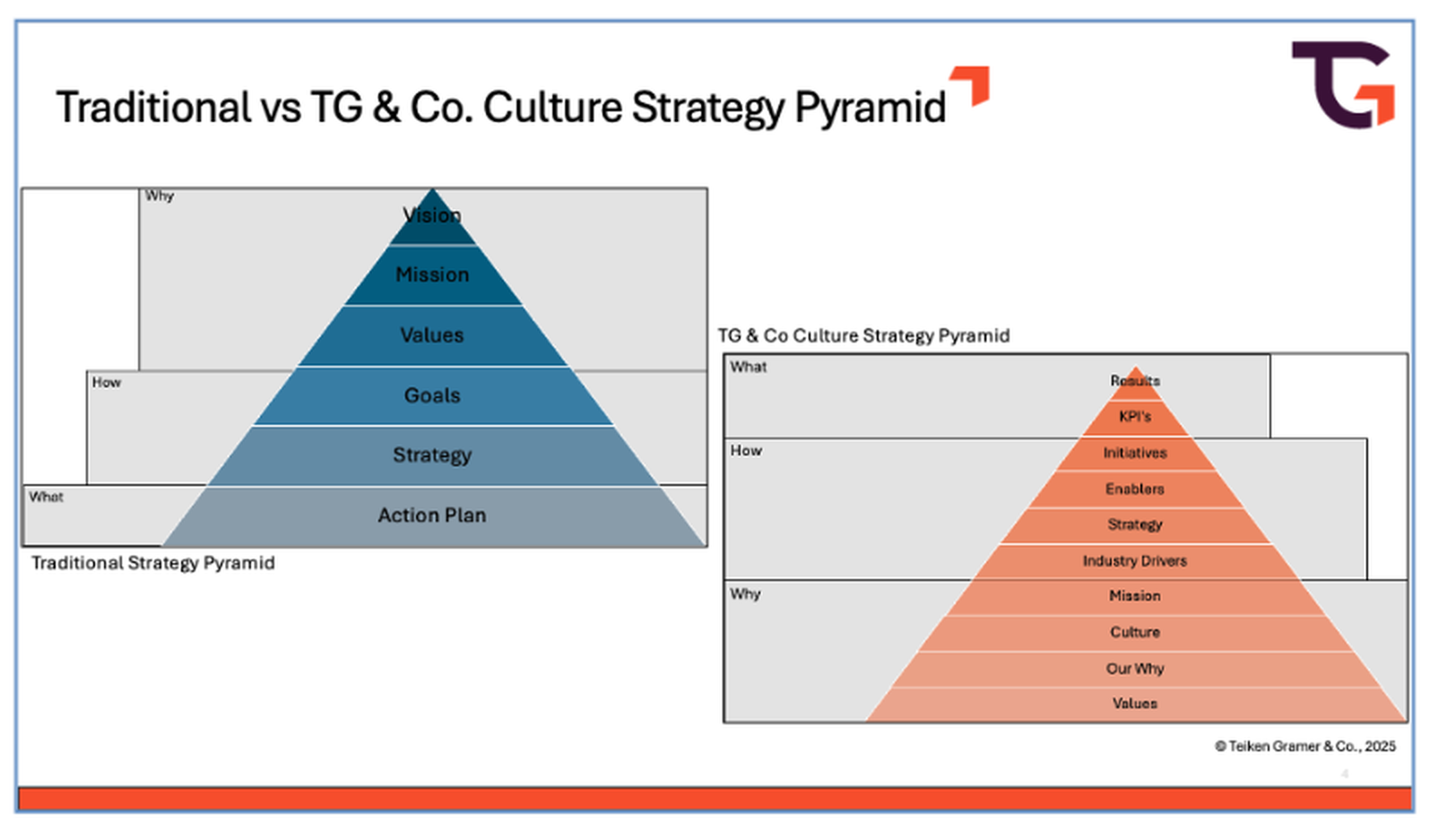(and why culture really does eat strategy for breakfast)
Fall. My favorite season, when we kick off back-to-school routines, fantasy football leagues, pumpkin spice everything — and, of course, fall strategic planning for the year ahead. Unfortunately, the odds of your plan being fully implemented are about as good as winning that fantasy football league.
The reality is disheartening: More than two-thirds of strategic plans fail. And for mid-market companies, the odds are closer to 1 in 10.
Why Plans Fail
Tools, methods, and models abound to help simplify planning and execution. But regardless of the tool or process, most plans end up on the shelf by May or June. Why? Because once business ramps up, teams shift focus to customers and revenue. The plan gets left behind.
Is the problem that we don’t know how to build plans? Not at all. We’re great at building them. It’s the execution that breaks down.
As Jerry Seinfeld quipped to a rental car agent: “Anyone can take a reservation. Holding the reservation is the most important part.” Likewise, anyone can build a plan. Executing the plan is the important part. And that’s where we fail.
The research is clear:
- Harvard Business Review: 60–70% of strategic initiatives are never successfully implemented.
- McKinsey: 70% of change programs fail to reach objectives.
- Kaplan & Norton: Only 10% of organizations execute strategies successfully.
- SMB surveys: Failure rates closer to 80%, largely due to weak execution discipline.
So, what’s the real issue? Not strategy. It’s culture.
Without a culture wired for execution, accountability, and innovation, even the best strategies are doomed.
The Root Causes of Failure
- Weak Execution Discipline — Plans don’t translate into quarterly/monthly goals. No accountability. Firefighting replaces strategy.
- Lack of Leadership Alignment — Leaders leave planning sessions with different interpretations. Priorities conflict in execution.
- Poor Communication — Fewer than 10% of employees understand the company strategy. Plans aren’t cascaded into roles. Employees lack ownership.
- Over-Ambition and Lack of Focus — Too many initiatives dilute resources. Leadership avoids making hard trade-offs.
- Insufficient Resources — Budgets, staffing, and time aren’t aligned. SMBs especially underestimate bandwidth.
- No Adaptation or Review — Plans are treated as fixed. Market shifts quickly render assumptions obsolete.
Turning the Pyramid Upside Down
Most strategy pyramids show vision at the top and tactics at the base. But think about it: the bottom represents the foundation. Why should action plans sit there?
They shouldn’t. Values should.

Action plans and KPIs may guide effort, but values and culture sustain it. Without them, execution falters.
Culture As the Strategic Plan
What if instead of starting with strategy maps and KPIs, you began by building a culture wired for innovation, accountability, and change? What if the culture itself was the strategic plan?
If “culture eats strategy for breakfast,” then it follows: an organization’s shared values and behaviors are often more decisive than its written plans.
The Smarter Strategy for SMBs
For SMBs, the smartest strategy isn’t another binder of plans. It’s building a culture where change, innovation, and accountability are second nature.
In 2026, make culture the foundation of your strategic plan.
For questions on this First Principles Brief, strategic planning or culture development, please contact:
Brent.Teiken@teikengramer.com
Phone: 701-306-5525
We’ve been through it. We’ll help you prepare for it.
